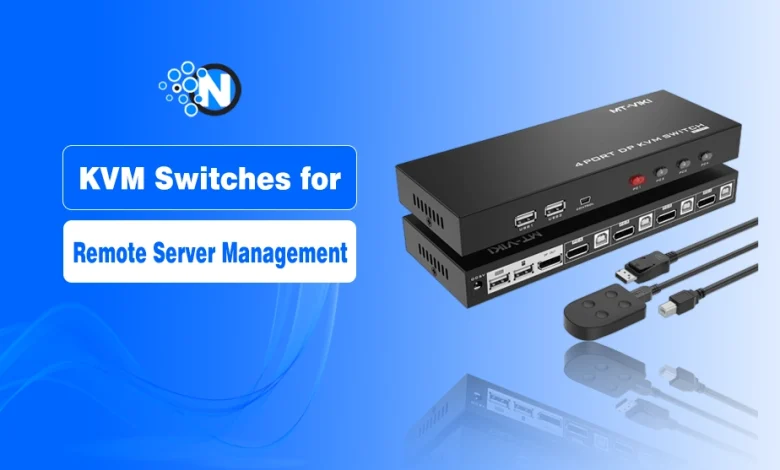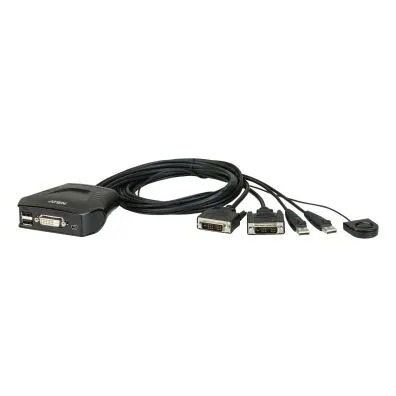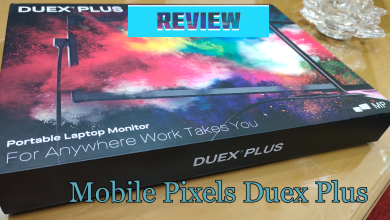KVM Switches for Remote Server Management: Expert IT Infrastructure Guide 2025

I’ve been managing data centers for over fifteen years, and I can tell you firsthand that server room chaos is real. Walking into racks filled with tangled cables and multiple consoles used to be my daily nightmare. KVM switches changed everything for our operations team.
These devices aren’t just nice-to-have accessories; they’re essential infrastructure that saved our company thousands while dramatically improving how we handle server management.
In this blog post, I will share what I’ve learned from implementing KVM switches across different enterprise environments and why they should be part of your infrastructure strategy.
Let’s start!
What Are KVM Switches? My Take on Essential Server Infrastructure
KVM switches are your command center for controlling multiple servers without the headache of juggling different keyboards and monitors. When our team first deployed these units, the difference was immediate. Instead of running between different consoles, we could access any server from one workstation using simple hotkey combinations.
Modern units handle everything from older VGA connections to newer 4K DisplayPort setups, which meant we didn’t have to worry about compatibility issues with our mixed server environment during our last infrastructure refresh.

Why Smart Data Centers Actually Use KVM Technology
Last year, our CFO asked me to justify every piece of hardware in our data center budget. KVM switches were easy to defend because the numbers don’t lie. We eliminated approximately 70% of our console hardware costs while freeing up premium rack space that was costing us a significant amount of money each month.
The improved cable management alone made our cooling systems more efficient. I’ve consulted teams at larger companies who’ve seen similar results. When you’re managing hundreds of servers, having centralised access isn’t just convenient, it’s absolutely necessary for maintaining reasonable response times during emergencies.
IP KVM Switches: Game-Changers for Remote Management
Remote work changed how our team operates, but IP KVM switches made it possible without compromising security. These network-enabled units let us access servers from anywhere, even when the operating system crashes completely. I remember troubleshooting a critical boot issue from my home office last month, something that would’ve required a two-hour drive to the data center before we implemented IP KVM technology.
The encryption and authentication features meet our security team’s requirements while providing the flexibility that modern IT operations demand. Out-of-band access has literally saved us during several major incidents.
Selecting Enterprise KVM Solutions: Lessons from Real Deployments
Choosing the right KVM switch requires an honest assessment of your current setup and realistic growth projections. We learned this the hard way during our first deployment when we underestimated port requirements and had to upgrade within six months. Video compatibility matters more than most people realise, mixing legacy VGA servers with modern DisplayPort systems requires switches that handle multiple connection types seamlessly.
Features like redundant power supplies and SNMP monitoring integration proved invaluable during our recent expansion. Don’t skip the professional consultation phase; experienced integrators catch issues that aren’t obvious from spec sheets alone.
KVM Implementation: What Actually Works in Practice
Professional KVM deployments require more planning than most teams initially realise. Quality cabling makes or breaks the entire installation—we use certified Cat6A throughout our facilities after experiencing signal issues with cheaper alternatives. Network configuration needs dedicated management VLANs with proper access controls; mixing KVM traffic with production networks creates unnecessary security risks.
Documentation becomes critical when you’re training multiple administrators on the new systems. We maintain detailed network diagrams and access procedures that proved essential during staff transitions. Regular firmware updates aren’t optional—they address security vulnerabilities that could compromise your entire management infrastructure.
Finding Reliable KVM Suppliers: Australian Procurement Reality
Working with local distributors in Australia has been crucial for our operations. Companies like Dicker Data and Ingram Micro understand local compliance requirements and provide support when things go wrong. We learned early that international suppliers often struggle with ACMA standards and local warranty obligations.
Professional services matter too; having experienced technicians handle site surveys and implementation planning reduced our deployment time significantly. The higher upfront costs of working with established local partners paid for themselves through faster resolution times and proper technical support. Enterprise customers need suppliers who understand mission-critical infrastructure requirements, not just catalogue resellers.
Strategic KVM Investment: Real Returns from Infrastructure Modernisation
Our KVM infrastructure investment hit break-even after eighteen months, primarily through eliminated hardware costs and reduced emergency site visits. The productivity gains were harder to quantify but equally important, our administrators can handle more systems efficiently, and response times improved dramatically during critical incidents.
These improvements supported our broader digital transformation initiatives by enabling remote management capabilities that our distributed team needs. As we expand into edge computing and hybrid cloud architectures, centralised KVM management becomes even more valuable. Smart infrastructure investments like KVM switches create operational flexibility that pays dividends for years.




